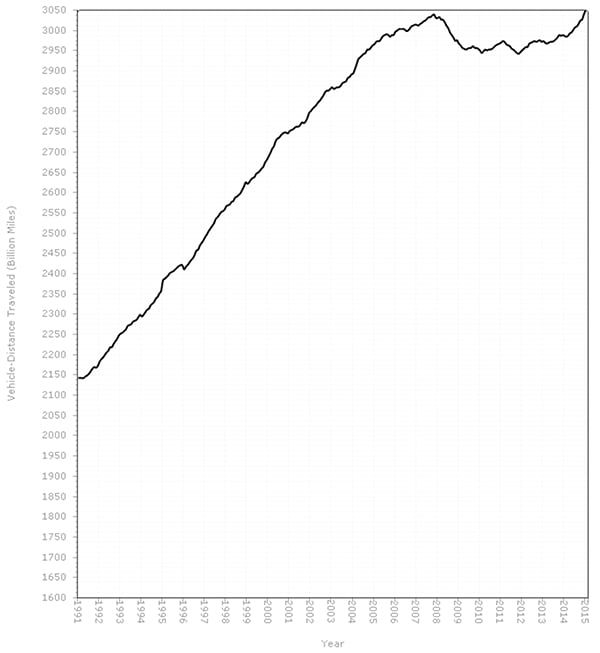Cars and Drivers
Miles Driven by Americans Reached All-Time High in February
Published:
Last Updated:

Seasonally adjusted miles driven in February totaled 254.1 billion, up 2.6% year-over-year, but down 1.2% compared with January 2015. Cumulative travel in the first two months of the year is up 3.9%, or 17.1 billion miles.
Lower gasoline prices certainly played a role in the increase in miles driven. The average price for a gallon of regular gasoline in February was $2.22, according the U.S. Energy Information Administration, a full $1.14 per gallon less than the price in February of 2014.
The number of miles U.S. drivers have logged over the past seven years has been stagnant (see graph below). The impact of the Great Recession, with its high levels of unemployment and low levels of wage growth, surely played a significant role. There also has been a demographic shift, with fewer younger drivers — who tend to drive more — and more older drivers, who tend to drive less.
ALSO READ: The States With the Most Deadly Accidents
When the FHWA data are adjusted for population, the month that posted peak number of miles driven is June 2005. On that basis, miles driven in February are still about 5.7% below the peak.
By region of the country, drivers in the West showed the largest year-over-year increase in miles driven, up 6.6%. The North Central states posted a gain of 2.8%, the South Atlantic states drove 1.9% more miles, the Northeast states drove 1.4% more, and drivers in the South Gulf states added 0.8% to their travel miles.

Want retirement to come a few years earlier than you’d planned? Orare you ready to retire now, but want an extra set of eyes on your finances?
Now you can speak with up to 3 financial experts in your area for FREE. By simply clicking here you can begin to match with financial professionals who can help you build your plan to retire early. And the best part? The first conversation with them is free.
Click here to match with up to 3 financial pros who would be excited to help you make financial decisions.
Thank you for reading! Have some feedback for us?
Contact the 24/7 Wall St. editorial team.